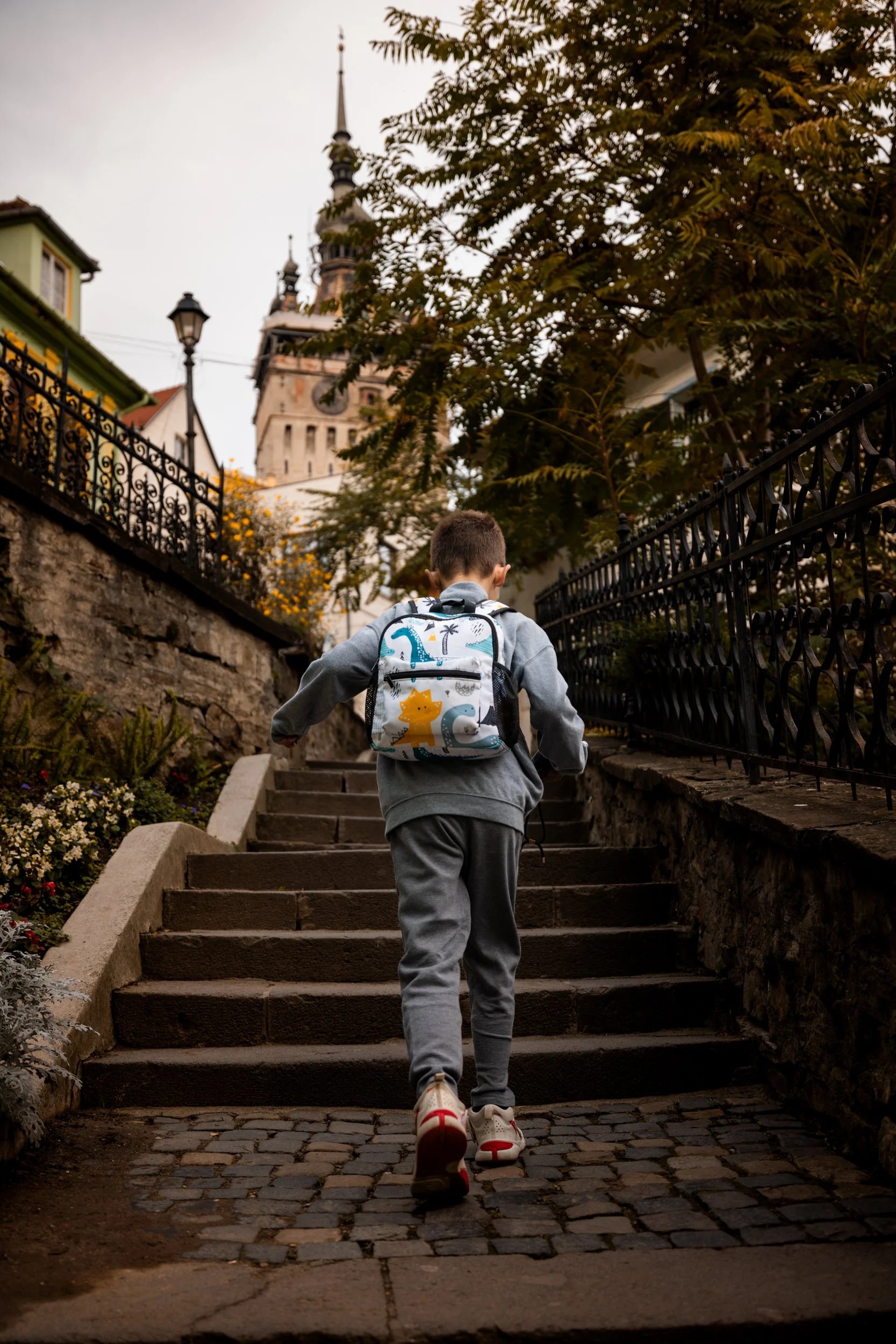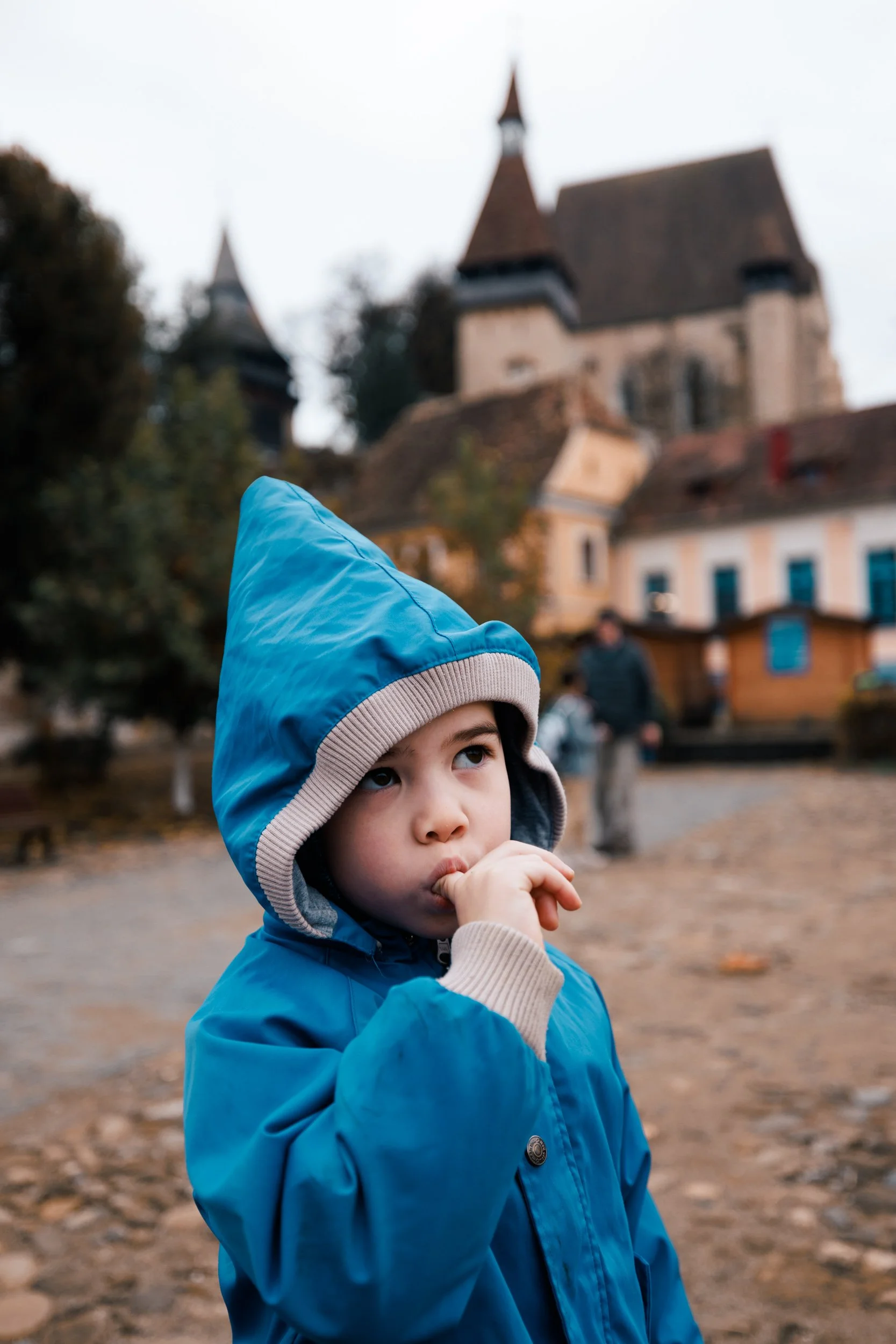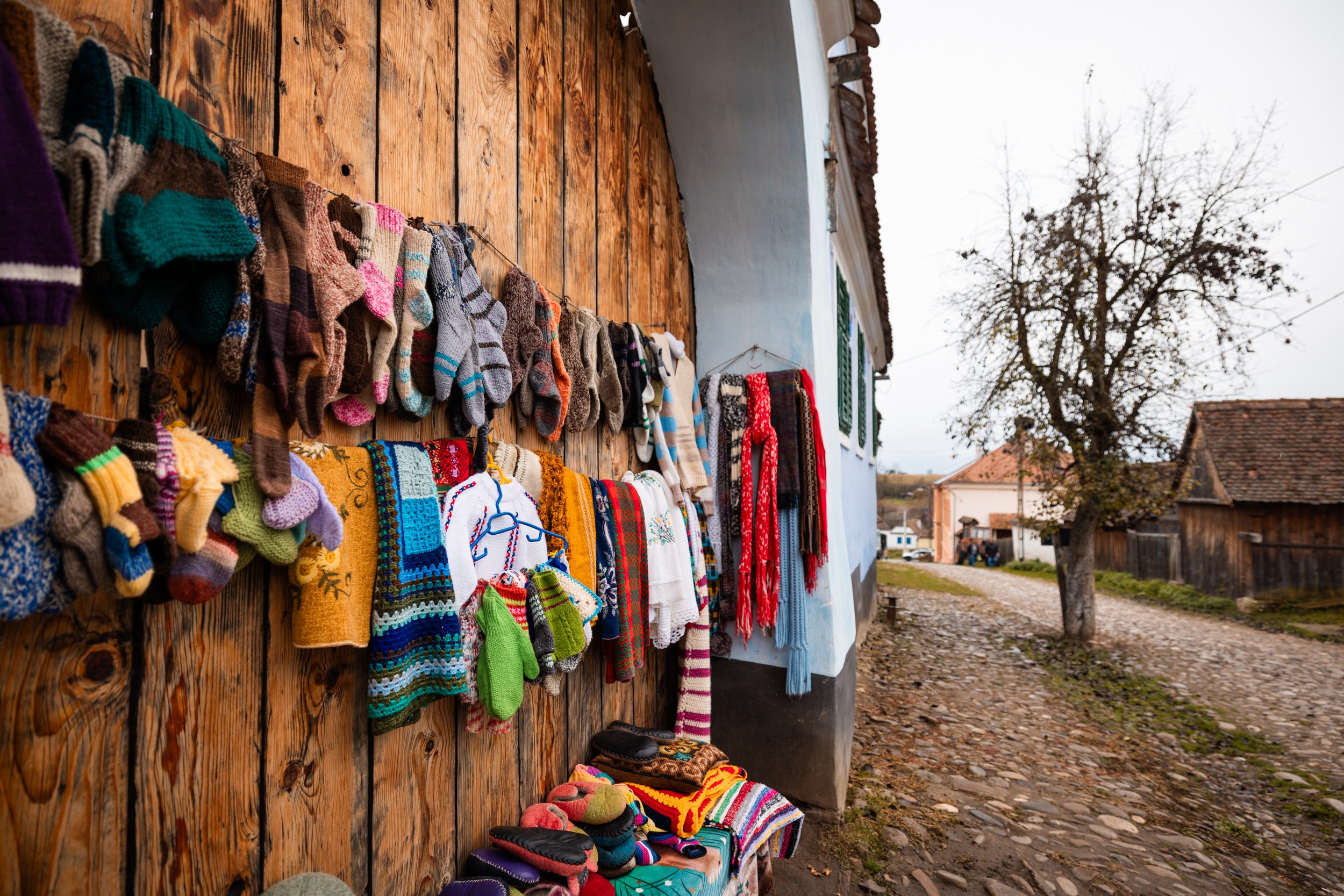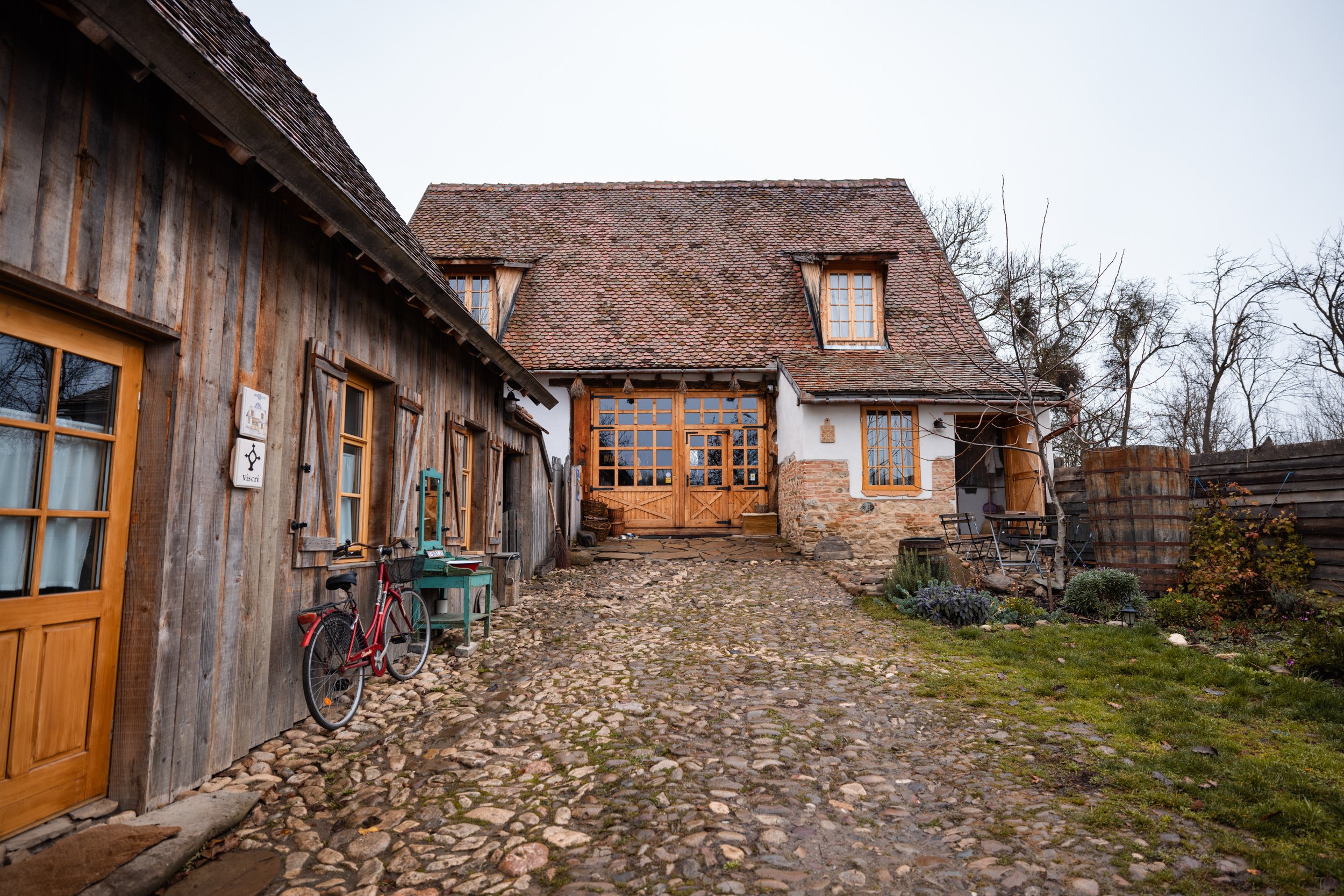Capturing Transylvanian Treasures: 14 Best Photo Spots in Sibiu and Sighișoara, Romania
Welcome to Transylvania, where medieval charm, vibrant history, and stunning architecture converge to create a photographer's paradise. We arrived in Sibiu on day 7 of our 17-day road trip in Romania. After driving through the iconic Transfăgărășan Highway, we explored two of Transylvania's gems, Sibiu and Sighișoara, in addition to driving through the Transalpina Highway. The timeless beauty of these two enchanting cities were an integral part of our unforgettable journey in Romania.
The following 14 photo spots were only a small fraction of our visual journey and lasting memory in Romania, but hopefully they will inspire you to embark on a journey to see this beautiful country with your own lens.
Sibiu: A Tapestry of Medieval Elegance
Sibiu, situated in the heart of Transylvania, Romania, is a picturesque city renowned for its well-preserved medieval architecture and vibrant cultural scene. With its charming squares, pastel-colored buildings, and a rich history, Sibiu invites visitors to explore its cobblestone streets and experience a unique blend of tradition and modernity.
Sibiu was acclaimed as European cultural capital in 2007, the same year I got my first DSLR.
1. Piata Mare (The Big Square)
Begin your photographic journey in Sibiu at Piata Mare, the city's largest square. Framed by colorful baroque buildings and the towering Council Tower, this bustling square offers endless opportunities to capture the vibrant atmosphere and architectural splendor.
2. Bridge of Lies
Head to the iconic Bridge of Lies (Podul Minciunilor), the first cast-iron bridge in Romania.
With its charming backdrop of medieval buildings, this bridge provides a picturesque setting for capturing the essence of Sibiu's historic charm and romantic allure.
The bridge itself was not strikingly special, but could serve as a vantage point to photograph its surroundings.
3. Astra Museum
The Astra Museum in Sibiu, Romania, is the largest open-air ethnographic museum in the country, spanning over 96 hectares and showcasing over 400 buildings from various regions.
This immersive museum provides visitors with a comprehensive journey through Romania's cultural history, with exhibits ranging from traditional houses and workshops to authentic artifacts and rural landscapes.
4. Cisnădioara Fortress, Cisnădioara
Located 20 minutes out of Sibiu by car, Cisnădioara Fortress is a medieval fortress perched atop a rocky hill near the village of Cisnădioara. Dating back to the 13th century, this well-preserved fortress offers panoramic views of the surrounding countryside and features a distinctive fortified church at its center.
We spent a couple of nights in an airbnb in Cisnădioara, and really enjoyed the fresh air and tranquility of the countryside.
5. Castelul de Lut Valea Zânelor, Porumbacu de Sus
Castelul de Lut Valea Zânelor, located in a small town called Porumbacu de Sus, 50 minutes drive from Sibiu, is a captivating structure often referred to as the "Clay Castle." It was right between Casa Alina, our two-night stay on Transfăgărășan Highway, and Cisnădioara, where our next airbnb was located (20 minutes out of Sibiu). So it was a natural stop on our way.
This whimsical and eco-friendly castle, made entirely of clay and other natural materials, stands out for its fairytale-like design, offering you a unique and enchanting experience.
We were told these fairytale houses were in the process of being converted to guest houses for future tourists. Get ready for a Snow White photo experience that we were not able to capture.
Sighișoara: A UNESCO World Heritage Gem
Sighișoara is a captivating medieval town nestled in the heart of Transylvania, known for its exceptionally well-preserved historic architecture and cobblestone streets.
Recognized as a UNESCO World Heritage Site since 1999, Sighișoara boasts a picturesque citadel adorned with colorful buildings, fortified towers, and charming squares.
Birthplace of Vlad the Impaler, the town also combines its rich history with a vibrant cultural scene, making it a delightful destination for those seeking a blend of medieval charm and artistic flair.
If someone told me Sighișoara was the most beautiful city in Romania, I wouldn't be surprised after seeing it with my own eyes. It was the 5th place we stayed in Romania. Although I considered every place we visited a true gem, Sighișoara's charm was at another level.
6. Clock Tower
The Clock Tower in Sighișoara is a prominent landmark that dominates the town's medieval skyline. Built in the 14th century, the tower stands at the entrance of the citadel and houses a museum showcasing the history of the town, while its iconic clock mechanism continues to keep time for the picturesque medieval setting of Sighișoara.
The tower was going through repair work during our visit so we could only see it from outside. The tower was such a dominant structure in Sighișoara that you could see it from many different directions. Try to photograph it from different angles and practice balancing lines and content in your composition. Check out my other composition tips.
I still haven’t come with a perfect shot after trying all possible angles, but that’s normal for anyone on the photography journey. Sometimes the journey for self-improvement, rather than the outcome, is the more meaningful part.
7. Citadel Square (or Main Square)
The Main Square in Sighișoara, Romania, is a charming and well-preserved medieval square surrounded by colorful buildings, each adorned with unique facades and architectural details. The most important structure of the Main Square is the imposing Clock Tower, so the square offers you a delightful blend of historic atmosphere and vibrant local life.
We took the red train that circled around the city from the Main Square. It was a family-friendly approach to see Sighișoara beyond the fortress. For anyone with young kids visiting Sighișoara, apparently this is a must.
8. Scholars' Stairs
The Scholars’ Stairs were built in 1642 with the purpose to facilitate access to the school and church by school children and church-goers.
The covered stair-passage winds its way up the hill connecting the lower and upper parts of the medieval town. With the original 300 steps later reduced to 175, the stairway provides a delightful ascent through the historic heart of Sighișoara, offering visitors a glimpse into the town's architectural beauty and cultural charm.
The staircase might not be something of particular charm, but the view after the climb was rewarding. We walked along the hilltop path that was surrounded by historic buildings and trees with golden leaves. Everything was in perfect harmony with the fall colors.
9. Church on the Hill
The Church on the Hill in Sighișoara is a medieval church perched on a hill within the historic citadel. Dating back to the 14th century, it is renowned for its Gothic architecture, ancient frescoes, and the impressive 500-year-old wooden altar, making it a significant cultural and historical landmark in the town.
The church was located right outside Scholars' Stairs on the hill. Rather than photographing the church, check out the panoramic views of Sighișoara on the terrace next to the church. This would be a great vantage point for landscape photographers wanting to capture the Sighișoara skyline.
Capture the red rooftops, the lush green in the surroundings, the bridge and mountains in the backdrop, all offering a timeless perspective of this UNESCO World Heritage site.
10. The Orthodox Cathedral
The Orthodox Cathedral in Sighișoara, Romania, stands as a significant religious landmark, contributing to the town's diverse architectural tapestry. Characterized by its Eastern Orthodox design and adorned with intricate details, the cathedral serves both as a place of worship and a testament to the cultural heritage of Sighișoara.
Photograph it from the terrace next to the Clock Tower during sunrise or sunset. Try long exposure to capture the light trails of the vehicles traveling on the highway in blue hours.
On the same terrace, you can also point your camera to a different direction and get a warm-toned perspective.
11. Sighisoara towers
Sighișoara is renowned for its well-preserved medieval architecture, and the town is often associated with its distinctive towers. Out of the original fourteen towers from medieval times, nine have survived.
The Clock Tower is the most famous among them, but others, like the Shoemakers' Tower, Tinsmiths' Tower, and Butchers' Tower, contribute to the town's historical charm.
As we walked to trace all nine towers, we also discovered nice walking trails in the nature, which were part of the delightful charm you’d experience in this UNESCO town.
12. Church of the Dominican Monastery
The Church of the Dominican Monastery in Sighișoara, Romania, is a historic religious site dating back to the 13th century. Characterized by its Gothic architecture and rich medieval ambiance, the church is known for its impressive interior adorned with frescoes and its significant role in the town's cultural and religious heritage. We have seen so many beautiful churches in the previous 18 weeks in Europe, eg. in Rome, Venice, or Lisbon, and felt a bit indifferent to walk in any more churches with simpler design like this. However, it doesn’t mean you shouldn’t see it.
Transylvania is home to nearly two hundred villages with fortified churches built by the Saxons between the 13th and 15th centuries. Seven of the fortified churches have been designated by UNESCO as World Heritage Sites, including Biertan Fortified Church and Viscri Fortified Church, which you can visit on day trips from Sighișoara.
We left Sighișoara on day 11 of our 17-day road trip in Romania, and visited Biertan and Viscri on our way to Brasov, our next destination.
13. Biertan fortified church, Biertan
Biertan was 30 minutes away from Sighișoara, and 2 hours away from Brasov.
A UNESCO World Heritage Site known for its impressive medieval architecture and well-preserved fortifications. Nestled in the Transylvanian countryside, the church is renowned for its intricately carved wooden door, fortified walls, and historical significance as a symbol of Transylvanian Saxon craftsmanship.
Once again, the church was not open to public during our visit. So we could only walk around the church and see it from the outside.
14. The White Church, Viscri
Viscri is 40 minutes away from Sighișoara and 1 hour 10 minutes away from Brasov.
We visited Viscri’s main attraction: the White Church. It is a captivating UNESCO-listed fortified church known for its distinct white exterior and medieval charm. This well-preserved Transylvanian Saxon church features a simple yet elegant design, and its picturesque setting in the traditional village of Viscri adds to its cultural and historical allure.
I had to admit, I was more drawn to the village itself than the church. Viscri is renowned for its traditional rural charm, with cobbled streets, historic houses, and a peaceful atmosphere.
The village was so small that we heard addresses such as Viscri 32, Viscri 38. Instead of street names, the addresses started with the village name. There was one main street, although we had to turn off the main road in order to get to the White Church.
Be prepared that there are limited restaurant options and seats are even more scarce. We walked to the only restaurant that was open on the day we visited, and the seats were all booked - although only one table had guests when we walked in.
Despite the rain and the tour without meal option, I still very much enjoyed Viscri.
Sibiu and Sighișoara, with their medieval allure and historical significance, beckon photographers to capture the essence of Transylvanian beauty.
From the vibrant squares and charming bridges of Sibiu to the UNESCO-listed citadel and birthplace of Dracula in Sighișoara, these cities offer a treasure trove of photo spots for those seeking to immortalize the magic of Romania's past.
This wraps up my favorite photo spots of the part 3 of our 17-day road trip in Romania. Coming up next I’ll share our last 7 days and highlights in Brasov and Cluj-Napoca, and their nearby towns from day trips.












































































The last part of our 17-day road trip in Romania, and our favorite 18 photo spots in and around Brasov and Cluj-Napoca.